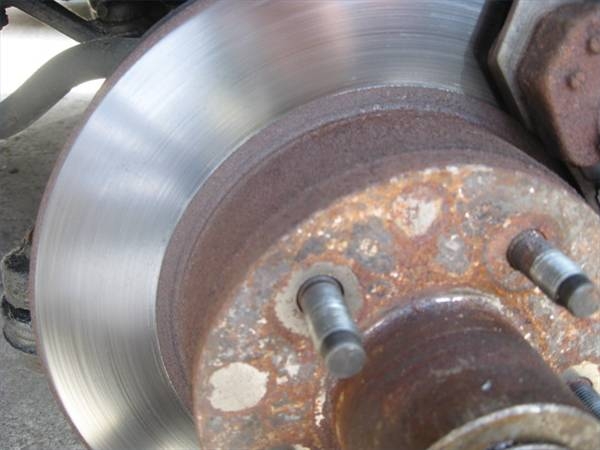
A brake rotor is a critical part of the disc brake system on vehicles. Identifying, understanding the purpose of the rotor and how it works in combination with the other brake system parts will help preserve your rotors.
The brake rotor is a large round hub which slips through the wheel axle bolts ending up with it's rear side sitting flush to the axle plate. The rotor has a smooth machined surface on both sides that the brake discs come in contact with it. The discs are attached and held together to a part called the caliper, ending up with one disc positioned in the front of the rotor and the other disc faces the rear side.
Even though the disc brake system using a rotor or plate was first developed in the 1890's it did not become commonly used until the 1950's, and even then was typically only used on sports or race cars which demanded a more superior braking ability, which this system offers. The rotor and disc system became more prevalent for standard vehicles in the 1960's but were usually just installed for front brakes, which is where the majority of a vehicle's stopping power comes from. By the 1970's and 80's front disc brakes became more of the norm, but it was, and still is, not unusual for vehicles to continue to operate with a rear brake drum system using brake pads and drums rather than rotors and discs.
The purpose of the rotor is to provide a reliable, hardened steel, smooth surface for the brake discs to come in contact with to stop the vehicle. By the rotor being bolted to the axle by the lug nuts that secure the wheel, the rotor remain stable rotating with the wheel, and when the discs, which are the movable parts, closing onto the rotor when the brake pedal is depressed, come in contact with the rotor surfaces the wheels have no choice but to slow down and stop. The discs contact both sides of rotor simultaneously.
There are a few basic types of rotors. The standard factory issued type which are quite sufficient, and then there are high performance rotors with a thicker plate surface. Then some rotors have slots cut into them and are generally only used for racing cars requiring quicker stops at high speeds, or in general when a lot of stopping is required on a regular basis. The slotted rotor allow more fresh air to pass through decreasing the risk of over heating which could cause warping and braking failure. The slotted rotor however, due to the slots, will wear down brake discs sooner since they are not rubbing on a consistent smooth surface.
Unlike brake drum systems, the disc brake system using rotors require no adjusting and it is fairly easy to determine if the rotors are wearing thin or have been scored by simply removing the car wheel to observe them, rather than the wheel and then the brake drum, used on a drum system. Rotor brake systems also offer superior stopping power over standard drum systems as the discs contact the rotor more soundly and firmly using both sides of the rotor plate. Also there are less movable parts and springs to be concerned with breaking or coming loose. Another benefit of the rotor braking system is that it offers a quicker recovery from immersion in water from the road versing a contained brake drum system.
There is no specific time frame that rotors need to be machined or replaced. Regular inspection is required to determine if any scores/scars or worn down areas sometimes called "railroad tracks" are present. Normally if the discs are replaced at the proper interval and have not been allowed to cut into the rotors, they can last indefinitely. If discs are allowed to wear down so far that rivets on the discs for instance, cut into the rotors, the rotors will have to be machined or cut to level out the surface, if the scores or tracks are not too deep, or completely replaced if cutting is not an option. Cleaning the rotors with a brake cleaning fluid spray is also critical to keep foreign particles and brake dust off, which accumulations can damage the rotor over time and create scarring.